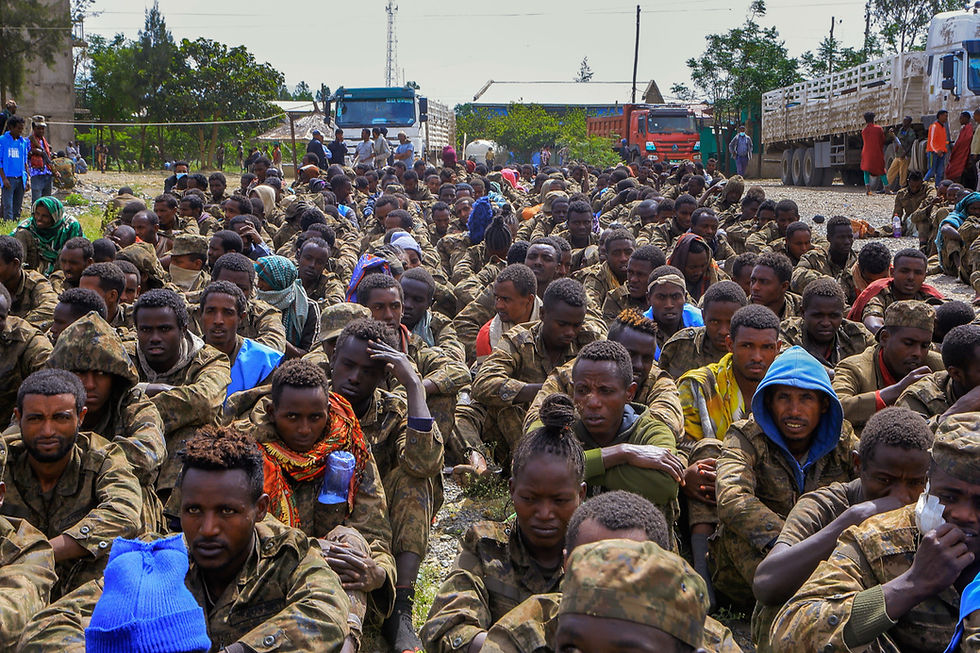When the East goes in the Middle
- Pablo Díaz Gayoso

- Mar 3
- 4 min read
Updated: Mar 24

When we talk about the Middle East, the image of a peaceful region rarely comes to mind. Going back to past times does not help to find less conflictive situations than the current one, the bonfire of conflict is still burning, varying its strength. French, British, Ottoman and more recently American imperialist interventions have been the norm in the region. On the other hand, the internal dynamics of the countries themselves have brought more instability, such as the Arab Spring in 2010-11, the Islamist insurgencies such as Daesh or the Kurdish question.
Solutions brought in from outside have also failed to establish a system that would bring lasting peace to the region. US intervention at the turn of the century, far from bringing peace, democracy and stability to the region, has had disastrous results. The destruction of states such as Iraq, as well as its involvement in long-running civil wars such as the Syrian one have created a situation of chronic chaos and violence, have spoiled entire generations. The (in)ability of the United States to resolve the situation has led to a certain consensus in Washington that its presence in the Middle East is a distraction from its real geopolitical rival not in the Middle East but in the Far East. As early as 2009, the Obama Administration presented the famous “Pivot to Asia”, in an attempt to turn the tide of the heavy ship that is US foreign policy. The idea was to let Europe take charge of its own security, especially with regard to Russia, to abandon the headache that was the Middle East and to strengthen its presence in Asia to contain China. Little by little, the various administrations have been disengaging from the North Atlantic and from long-standing conflicts such as Iraq, Syria or Afghanistan, with disastrous consequences for its credibility as a potential ally. Examples were the abandonment of the Kurds in Syria in 2019, the uncoordinated exit from Afghanistan in 2021 or President Trump's threats to pull the US out of NATO.
The phase in which the Middle East found itself was one of reconstruction and rapprochement of the actors. In 2019 the United Arab Emirates (UAE) and Iran had begun to re-establish diplomatic relations after 3 years of rupture caused by regional tensions, the rapprochement of the UAE with the USA and territorial disputes. In 2021, the blockade that the Saudis along with Egypt, Bahrain and the UAE had imposed on Qatar for its support of the Muslim Brotherhood in 2017 was ended. And for similar reasons relations between Arabia and Turkey were restored. In March 2023 Saudi Arabia and Iran reached a pact sponsored by China and with the help of Oman and Iraq to resume diplomatic relations.The fall of Bashar Al Assad in December 2024 is bringing about a rapid normalization of Syria in the region. In short, the region was at a moment of reunion and where peaceful diplomacy was prevailing over conflict.
That trend has been suddenly interrupted by the Palestinian-Israeli conflict, which is at its hottest point in living memory. Hamas attacks on October 7, 2023 claimed more than 1,000 Israeli civilian and military lives, as well as the kidnapping of some 200 hostages. Israel's response has exceeded any possible interpretation of proportionality. In the course of the conflict, Israel has dropped the equivalent in kilotons of three atomic bombs on Gaza, killed nearly 30,000 people, a third of whom were not old enough to vote in an election. Seventy percent of the houses in Gaza have been destroyed or damaged, making them uninhabitable. Nearly two million Gazans have been forcibly displaced to the south, which is now overpopulated and lacking in basic services, creating the most recent man-made famine.
In this context, Israel's criminal behavior, and the unconditional support shown by the Biden Administration, threatens the extension of the conflict to more actors. The Iranian-led Axis of Resistance is at a time of heightened alert and tension. Houthi attacks on British and U.S. ships heading for the Suez Canal in January of this year have jeopardized one of the world's most used trade routes. At the same time, Iran's proxies in Syria and Iraq have attacked US targets in response to the unconditional backing of Israel. This situation has caused the US to allocate more military resources to the eastern flank of the Mediterranean, in principle only to act as a deterrent force to prevent Hezbollah from intervening to help Gaza.
The situation in Gaza has been another blow to the policy of normalization of Israel that the Trump Administration had managed to promote with the signing of the Abraham Accords. This pact between Israel and the United Arab Emirates advanced the recognition of Israel in the Arab environment. At the same time similar agreements were reached with Morocco, Sudan and Bahrain. These Arab countries joined Egypt (1979) and Jordan (1994) in recognizing the Hebrew state. This process opened the door for Saudi Arabia to join the process and before October 7 it was at a very advanced stage. Hamas attacks and the Israeli quest for revenge have (for the time being) put that possibility off for a while. Arab governments are authoritarian (theocracies, monarchies, military dictatorships...) and for that reason lack a democratic control linking their political action to public opinion. The most recent polls in these countries show that support for normalization is at an all-time low. Renewed support for the Palestinian cause will make it difficult for elites in Arab countries to get back on the road to normalization with Israel in the coming years. At the same time, the Israeli government seems more concerned with its own survival and submission to the more extremist positions in the short term than with the long-term consequences.










Comentarios